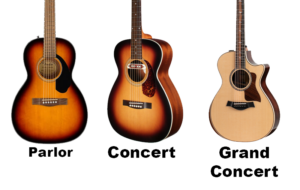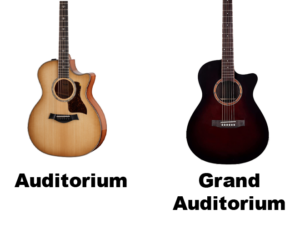Uncategorized
Top Guitar Books for Beginners
Greetings, aspiring guitarists and music enthusiasts! Are you ready to embark on a musical journey that leads you to the realm of harmonious exploration? Today, we’re delving into the world of guitar books for beginners – a treasure trove of knowledge and guidance that will set you on the path to mastering this enchanting instrument. Whether you’re just starting your musical voyage or seeking to refine your skills, this guide will introduce you to the finest guitar books tailored to beginners. So, grab your guitar, find a comfortable spot, and let’s dive into the melodious world of musical education and creativity!
The Importance of Guitar Books for Beginners: Your Trusted Roadmap
Guitar books for beginners are like your trusty companions on a musical journey. They offer valuable insights, step-by-step instructions, and a structured approach to learning the guitar. With the right book in hand, you’ll gain a solid foundation, learn proper techniques, and develop a deeper understanding of music theory – all while nurturing your love for playing the guitar.
1. “Guitar for Absolute Beginners” by Daniel Emery
If you’re starting from scratch, “Guitar for Absolute Beginners” is your ideal guide. This book takes a patient and supportive approach, guiding you through the basics of holding the guitar, finger placement, and strumming techniques. With clear explanations and fun exercises, you’ll gradually build your skills and confidence.
2. “Hal Leonard Guitar Method, Complete Edition” by Will Schmid and Greg Koch
For a comprehensive and well-rounded education, the “Hal Leonard Guitar Method” is a must-have. This series covers everything from basic chords and scales to more advanced techniques. The clear illustrations and play-along audio tracks make it easy to follow along and practice.
3. “Teach Yourself to Play Guitar: A Quick and Easy Introduction for Beginners” by David M. Brewster
True to its title, this book offers a quick and easy introduction to playing the guitar. It covers essential topics such as reading music, strumming patterns, and basic chords. The straightforward instructions and concise lessons make it perfect for beginners with busy schedules.
4. “Guitar All-in-One For Dummies” by Jon Chappell and Mark Phillips
If you’re looking for a comprehensive resource, “Guitar All-in-One For Dummies” is your go-to guide. This book covers a wide range of topics, including guitar basics, music theory, and even how to set up and maintain your instrument. With its user-friendly format, you’ll find answers to your questions as you progress.
5. “The First 100 Chords for Guitar” by Joseph Alexander
As you advance in your guitar journey, chord knowledge becomes crucial. “The First 100 Chords for Guitar” offers a practical approach to learning chords, providing you with a solid foundation for playing various songs. The clear diagrams and chord progressions make it easy to follow along.
Tips for Getting the Most Out of Guitar Books for Beginners
As you dive into your chosen guitar book, consider these tips to make the most of your learning experience:
1. Consistent Practice: Dedicate regular practice time to work through the book’s lessons and exercises.
2. Go at Your Own Pace: Don’t rush through the material. Take your time to master each concept before moving on.
3. Use Supplementary Resources: Explore online tutorials, videos, and apps that complement your chosen book.
4. Stay Patient and Persistent: Learning the guitar takes time and effort. Celebrate your progress and keep pushing forward.
Conclusion: Your Journey with Guitar Books for Beginners
Congratulations, you’re now equipped with the knowledge to choose the best guitar book for your beginner’s journey. Remember, these books are your companions, guiding you through the intricacies of playing the guitar and unraveling the mysteries of music. With dedication and practice, you’ll soon find yourself strumming chords, playing melodies, and discovering the joy of creating music. So, grab your guitar, pick up one of these recommended books, and let your musical adventure begin – one chapter at a time!
Uncategorized
Acoustic Guitar Sizes: Finding Your Perfect Fit
Have you ever wondered how the size of an acoustic guitar affects its sound? From the intimate, focused tones of a parlor guitar to the deep, resonant sound of a jumbo, the size and shape of an acoustic guitar can have a profound impact on its sonic characteristics.”
In this article, we’ll explore acoustic guitar sizes, their variations, and how to choose the perfect size that suits your needs.
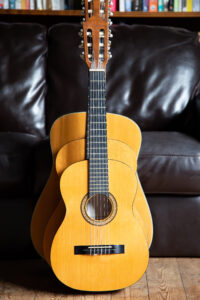 Understanding Acoustic Guitar Sizes: A Musical Puzzle
Understanding Acoustic Guitar Sizes: A Musical Puzzle
Acoustic guitar sizes refer to the dimensions and proportions of the guitar body, which significantly influence the instrument’s tonal characteristics, projection, and playability.
Just like pieces of a musical puzzle, different sizes create distinct voices that cater to various playing styles and preferences.
The Spectrum of Acoustic Guitar Sizes
Acoustic guitars come in several sizes, each with its unique qualities and attributes. Let’s explore some common acoustic guitar sizes and their defining features:
-
-
Parlor Guitar: The parlor guitar is petite and charming, making it an ideal companion for intimate settings.
The name comes from the rooms in which the guitar was typically played in the late 19th century.
Some famous musicians who have been known to use the parlor guitar are, Eric Clapton, Mark Orton, Ed Sheehan, and John Mayer
Its smaller size results in a focused and balanced sound, perfect for fingerpicking and folk music.
-
Concert Guitar: Slightly larger than the parlor guitar, the concert guitar offers enhanced projection and volume. It strikes a balance between portability and sound, making it versatile for various genres.
It is often used in classical music and flamenco music with its full sound.
-
Grand Concert Guitar: With a larger body than the concert guitar, the grand concert guitar boasts a fuller sound and improved tonal complexity.
A popular choice for those who have a smaller stature and require an instrument that’s built to a shorter scale. Great choice for traveling musicians who often play live performances.
It’s suitable for fingerstyle playing and intricate arrangements.
-
Auditorium Guitar: The auditorium guitar, also known as the orchestra model (OM), features a well-rounded sound with a pronounced midrange.
More shallower than the dreadnought and narrower in width than a concert guitar. An Auditorium guitar brings the body closer to the player, making it feel more intimate and comfortable for stage use.
Some famous musicians who play it include Ed Sheeran, John Mayer, and Eric Clapton.
-
Grand Auditorium Guitar: Expanding on the auditorium guitar’s design, the grand auditorium guitar offers a versatile sound profile with enhanced bass response and overall volume.
It is a versatile mid-sized guitar that is a good choice for those who want a single guitar to travel with. The tone is great for strumming and picking. It performs well on stage and in the studio.
It suits a wide range of musical genres.
-
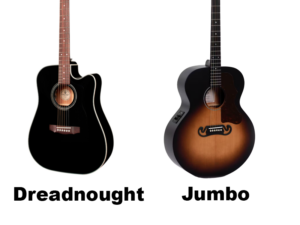 Dreadnought Guitar: The Dreadnought is a true icon, known for its bold and powerful sound. Its large body produces a strong bass response, making it ideal for strumming and vocal accompaniment.
Dreadnought Guitar: The Dreadnought is a true icon, known for its bold and powerful sound. Its large body produces a strong bass response, making it ideal for strumming and vocal accompaniment.This guitar is known for its powerful voice and lower-mid-rich tones that make it a favored choice for country artists. Although it is a popular choice for musicians of all genres.
Some famous musicians who play the dreadnought guitar include Hank Williams Jr, Elvis Presley, Keith Richards, Thom Yorke, and Kurt Cobain.
The original dreadnought guitars were made for the Oliver Ditson Company and featured mahogany backs and sides and spruce tops.
-
Jumbo Guitar: The jumbo guitar lives up to its name with a massive body that delivers robust volume and a deep bass presence.
This is the largest of the guitar family with a deeper body than the popular dreadnought. The body is wider and deeper than traditional acoustic guitars, which gives them a unique appearance.
Jumbo’s are well suited to rhythm guitarists in country and folk rock, and produce a deep rich sound favored by heavy strummers. Some famous musicians who play this guitar are Elvis Presley, George Harrison of the Beatles, Neil Young, Sheryl Crow, and Pete Townshend of The Who.
Choosing the Right Acoustic Guitar Size for You
Selecting the right acoustic guitar size involves considering factors such as playing style, comfort, and tonal preferences. Here are some steps to guide you on your quest:
-
Identify Your Playing Style: Determine whether you lean towards fingerpicking, strumming, or a mix of both. Different sizes excel in different playing styles, so choose one that complements your technique.
-
Consider Body Comfort: Hold and play guitars of various sizes to assess comfort. A guitar that fits well against your body ensures a pleasant playing experience, especially during extended sessions.
-
Evaluate Sound Preferences: Listen to the sound produced by different acoustic guitar sizes. Pay attention to tonal qualities, such as warmth, brightness, and projection, to find the one that resonates with your musical taste.
The Influence of Acoustic Guitar Sizes on Music
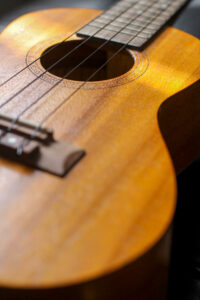 Acoustic guitar sizes and shapes can have a significant impact on the sound of the instrument.
Acoustic guitar sizes and shapes can have a significant impact on the sound of the instrument.The size of the guitar body type also relates to the volume of air within the instrument. Changes to the air capacity of the body will emphasize specific frequencies. A smaller body will have a more focused sound centered on higher frequencies, while a larger body will produce deeper low-end frequencies.
Body dimensions can provide some indication of the tone you might expect, but other factors exert a profound influence, too. Much depends on the tonewoods used to construct the body and the shape, size, and layout of the braces.
Finding Harmony in Acoustic Guitar Sizes
By delving into the nuances of size, sound, and playability, you’ve gained insights that will guide you toward the perfect fit for your musical aspirations.
As you continue your exploration, remember that each acoustic guitar size has its own unique voice and character. Embrace the joy of trying different sizes, celebrate the nuances of their sounds, and let your heart lead you to the one that resonates with your musical soul.
-
Uncategorized
Exploring the Enchanting C#maj7 Guitar Chord: Your Gateway to Musical Elegance
Greetings, fellow guitar enthusiasts and curious learners! Are you ready to embark on a musical journey that unveils the captivating world of the C#maj7 guitar chord? Today, we’re delving into the enchanting universe of the C#maj7 chord – a harmonious gem that adds sophistication and allure to your musical toolbox. Whether you’re an aspiring guitarist eager to expand your chord repertoire or a curious soul seeking to understand the intricacies of harmony, this guide will take you through the captivating realm of the “C#maj7 Guitar Chord.” So, grab your guitar, find a cozy spot, and let’s explore the harmonious tapestry of musical expression and creativity!
Unveiling the C#maj7 Chord: A Gateway to Musical Splendor
Imagine the C#maj7 chord as a musical key that unlocks a realm of melodic wonders. This chord’s unique tonal quality adds a touch of elegance and richness to your music, making it a versatile choice across various musical genres. Just as an artist selects the perfect brushstroke, the C#maj7 chord allows you to paint your sonic canvas with notes that evoke emotion and creativity.
Mastering the C#maj7 Chord: Crafting Harmonic Brilliance
Let’s delve into the mechanics of forming the C#maj7 chord on your guitar. Follow these steps:
1. Finger Placement: Begin by placing your index finger on the 1st fret of the B string (the second thinnest string), marking the root note (C#).
2. Middle Finger: Position your middle finger on the 2nd fret of the D string (the fourth thickest string), forming the major third (E# or F).
3. Ring Finger: Place your ring finger on the 3rd fret of the G string (the third thinnest string), creating the perfect fifth (G#).
4. Pinky Finger: Finally, use your pinky finger to press down on the 4th fret of the high E string (the thinnest string), adding the major seventh (B).
5. Strumming: Focus on strumming the G, B, and high E strings (the third, second, and first strings) while avoiding the low E string (the thickest string).
6. Sound Check: Strum the strings individually to ensure each note rings out clearly. Adjust finger placement if needed for a resonant sound.
Exploring C#maj7 Chord Variations: Adding Flavor
While the C#maj7 chord is inherently captivating, you can add variations to enhance its sonic potential. Here are a couple of ways to experiment:
1. Fingerpicking Patterns: Delve into fingerpicking techniques to create intricate patterns that highlight the individual notes of the C#maj7 chord.
2. Arpeggios: Practice playing the notes of the C#maj7 chord individually in a sequence, creating arpeggios that cascade like a gentle waterfall.
The C#maj7 Chord in Action: Musical Styles
The C#maj7 chord’s elegance and versatility make it a favorite choice for songs that demand both sophistication and depth. Here are a few popular songs that feature the C#maj7 chord:
1. “Breezin'” by George Benson: This jazz-infused tune showcases the C#maj7 chord’s harmonic richness and smooth allure.
2. “I’m Yours” by Jason Mraz: The C#maj7 chord contributes to the breezy and feel-good vibe of this acoustic pop hit.
Tips for Mastering the C#maj7 Chord
As you embark on your journey to master the C#maj7 chord, consider these tips to enhance your playing:
1. Practice Regularly: Dedicate focused practice time to build muscle memory and finger strength for the C#maj7 chord.
2. Smooth Chord Transitions: Work on transitioning smoothly between the C#maj7 chord and other chords to improve your overall playing fluency.
3. Experiment with Dynamics: Play the C#maj7 chord with varying degrees of intensity to explore its full range of tonal expression.
Conclusion: Embrace the Elegance of the C#maj7 Chord
Congratulations, you’ve embarked on a harmonious journey through the captivating world of the C#maj7 guitar chord. As you strum, experiment with variations, and play songs, you’ll discover the power of this chord to infuse your music with elegance, depth, and resonance. Keep practicing, keep exploring, and keep embracing the enchanting allure of the C#maj7 chord. It’s your key to a world of musical expression, where each note resonates with sophistication and allure. So, pick up your guitar, let your fingers dance across the strings, and let the captivating world of the C#maj7 chord lead you toward a realm of melodies that enchant the senses and elevate the soul, one harmonious note at a time!
Uncategorized
Harmonizing Your Sound: A Step-by-Step Guide on How to Tune a Guitar Electric
In the world of music, precision is paramount. Just as a symphony’s harmony hinges on the accurate tuning of each instrument, the melodic magic of an electric guitar springs forth from its perfectly tuned strings. Whether you’re an aspiring rock star or a seasoned guitarist, the process of tuning your electric guitar is an essential skill that can elevate your playing to new heights. This article is your comprehensive guide to achieving pitch-perfect tuning, ensuring that every strum, chord, and riff resonates with clarity and brilliance.
The Basics of Guitar Tuning
Tuning a guitar involves adjusting the tension of its strings to match specific pitches. A properly tuned guitar ensures that each string produces the correct note when played open or fretted, enabling you to play in tune with other instruments or recordings.
Step-by-Step Tuning Process
1. Choose Your Reference Pitch: Start by choosing a reference pitch for your tuning. The most common reference pitch is A440, which means that the A string (the second thickest string) is tuned to vibrate at 440 Hz.
2. Tune the Low E String: Begin by tuning the low E string (thickest string) to the reference pitch. You can use an electronic tuner, a tuning app, or another tuned instrument as a reference.
3. Use the 5th Fret Method: After tuning the low E string, press down on the 5th fret of the low E string. This produces the pitch of the open A string. Adjust the tuning peg of the A string until it matches the 5th fret of the low E string.
4. Tune the Remaining Strings: Following the 5th fret method, tune the remaining strings as follows:
Press down on the 5th fret of the A string to tune the D string.
Press down on the 5th fret of the D string to tune the G string.
Press down on the 4th fret of the G string to tune the B string.
Press down on the 5th fret of the B string to tune the high E string.
5. Check and Fine-Tune: Once all strings are tuned using the 5th fret method, play open chords and individual notes across the fretboard to ensure that your guitar is in tune in various positions.
6. Double-Check Intonation: After tuning, it’s important to check your guitar’s intonation. This involves comparing the open string to the note at the 12th fret. If the 12th fret note is not in tune, you may need to adjust the saddle position on the bridge.
Alternate Tunings and Tools
While standard tuning (E A D G B E) is the most common, electric guitars can be tuned to various alternate tunings to achieve unique sounds. Some popular alternate tunings include drop D (D A D G B E) and open G (D G D G B D).
In addition to electronic tuners and tuning apps, guitarists can also use pitch pipes, tuning forks, or even their ears to achieve accurate tuning. Learning to tune by ear is a valuable skill that enhances your overall musicality.
Maintaining Tuning Stability
To maintain tuning stability, consider the following tips:
1. Quality Strings: Use high-quality guitar strings that hold their tuning well.
2. String Stretching: After restringing or changing tunings, gently stretch and retune the strings several times to minimize initial tuning instability.
3. Proper Stringing Technique: Properly wind the strings around the tuning pegs to prevent slippage.
4. Nut and Bridge Care: Ensure that the nut and bridge are properly lubricated and well-maintained to minimize friction and keep strings in tune.
Conclusion
Tuning your electric guitar is the gateway to unlocking a world of melodious possibilities. Whether you’re unleashing thunderous power chords or weaving intricate solos, the process of tuning ensures that your instrument is ready to produce the full spectrum of sounds your musical heart desires. With a keen ear, a reliable tuner, and a touch of patience, you can master the art of tuning your electric guitar and embark on a harmonious journey of musical expression that resonates with precision, clarity, and resonance.
-
advanced9 years ago
How to Play “Sleepwalk” on the 3-String Guitar! Guitar TABs Included!
-
beginner8 years ago
3-String or 4-String? How to Decide Which is Right for You!
-
beginner9 months ago
Exploring Different Guitar Types: A Beginner’s Guide
-
Blues Guitar8 years ago
Go-To Tunings for Blues Slide Guitar
-
advanced9 months ago
Fun and Effective Guitar Exercises: Elevate Your Playing with These 5 Simple Techniques
-
Blues Guitar7 years ago
Jack Daniel’s Whiskey Barrel Guitar: How It’s Made and What it Sounds Like
-
Uncategorized9 months ago
Acoustic Guitar Sizes: Finding Your Perfect Fit
-
Guitars9 months ago
Bass vs Guitar: Exploring the Musical Journey

